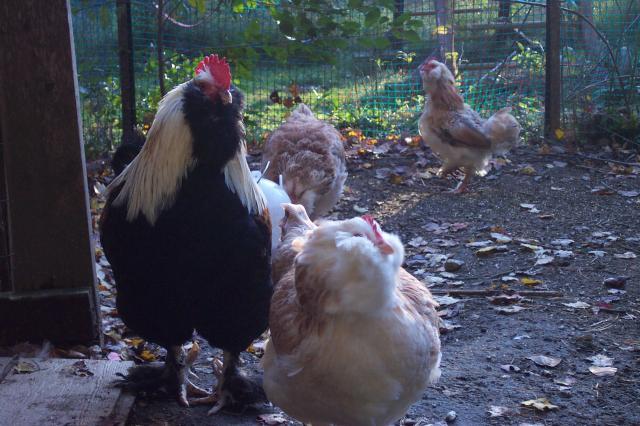- Aug 19, 2014
- 196
- 9
- 74
Currently, I have 6 chickens that are 14 weeks old (4 cockerels and 2 pullets of various breeds) I also have 18 younger chicks mostly 6 weeks old. Pretty soon I will have to get rid of roosters because even though I want to I can't keep them all. My question is which roosters will be the best to keep for breeding purposes later on. I'm mostly looking to breed for egg laying, personality, and "prettiness". Sex-linking would be a nice bonus.
I have already decided I am definitely keeping my buff orp roo so I can keep one or two other roos...mayyybe 3 others and see how that goes having 4 roos. I'll list out all the breeds that I currently have.
Roos:
-Buff orp
-Black australorp
-RIR (He seems to be starting to get aggressive)
-Partridge rock
-Golden campine (started crowing at 3 weeks...may be a loud roo)
-Silver-gray dorking
-Light brahma (I'm assuming at least 1 of my 5 will be a boy but its still too early to tell)
Hens:
-Barred rock
-Black australorp
-Buff brahma
-Light brahma
-Silver spangled hamburg
-Welsummer (I believe)
-Salmon faverolle
-Delaware (I think)
-Partridge rock
So what 2-3 roos would be the best to keep for my girls?
I have already decided I am definitely keeping my buff orp roo so I can keep one or two other roos...mayyybe 3 others and see how that goes having 4 roos. I'll list out all the breeds that I currently have.
Roos:
-Buff orp
-Black australorp
-RIR (He seems to be starting to get aggressive)
-Partridge rock
-Golden campine (started crowing at 3 weeks...may be a loud roo)
-Silver-gray dorking
-Light brahma (I'm assuming at least 1 of my 5 will be a boy but its still too early to tell)
Hens:
-Barred rock
-Black australorp
-Buff brahma
-Light brahma
-Silver spangled hamburg
-Welsummer (I believe)
-Salmon faverolle
-Delaware (I think)
-Partridge rock
So what 2-3 roos would be the best to keep for my girls?





